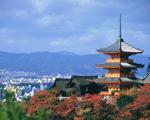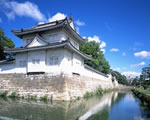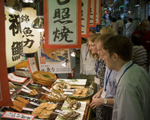Kyoto City
Familiar images of Japan come to life in Kyoto. The city limits contain opportunities to experience leading modern technology and architecture, neon lights and deafening gaming parlours, graceful geisha and serene Buddha, a formidable castle and secluded temples, and even lush green rice paddies. There is a great deal to see and experience in this city during free time in the business schedule and for accompanying persons who want to venture off site. Each season brings festival and event highlights that date back to the foundation of Kyoto in the eighth century AD. Please refer to the excellent information provided by the organisations listed below to assist in your planning. When you get here a network of tourist information offices will help you make the most of your time to explore. A very brief guide to the region follows.
| | ▲ Back to top
|
Southern Kyoto Prefecture
The area south of Kyoto city has always been an important transport corridor linking the former capital with the sea ports in Osaka and Kobe. There are many things to see and do such as visit the home of Japanese green tea in Uji as well as its UNESCO World Cultural Heritage sites of Byodoin temple and Ujigami shrine, the spectacular Uji River and a museum dedicated to interpreting the Tale of Genji.
| | ▲ Back to top
|
Central Kyoto Prefecture
Central and north-eastern Kyoto prefecture is called the Tamba region. It is characterised by mountainous, sparsely populated natural scenery. It is primarily an agricultural area and it provides Kyoto connoisseurs with culinary delights such as prized matsutake mushrooms and Tamba beef. Tamba wine has become one of the leaders in a fledgling Japanese wine industry. Kameoka is the closest onsen spa resort to Kyoto city, Fukuchiyama castle commands the central highlands, and Miyama town presents a chance to experience rural life as it always has been.
| | ▲ Back to top
|
Northern Kyoto Prefecture
Kyoto prefecture's north coast and hinterland Tango region is a leisure area of stunning coastline and wide sandy beaches. Miyazu is famed for its Amanohashidate land bridge of white sand and pine trees that is considered one of the three most scenic sights in Japan, and Kotobiki beach in Kyotango attracts visitors to sand that squeaks when you walk on it. The naval port of Maizuru boasts Japan's oldest brick warehouses. The cold winter helps Tango produce some of the finest silk crepe sought by the connoisseurs of Kyoto and Japan.
| | ▲ Back to top
|
Surrounding Areas
Kyoto is located in the centre of the Kansai region made up of the prefectures of Kyoto, Shiga, Mie, Wakayama, Nara, Hyogo and Osaka. Kansai has long been a culture and economic driving force for Japan. Perhaps this is the reason that the transport network is so comprehensive and cheap to use making the region an ideal place to explore and experience Japan. Popular day trips from Kyoto include Lake Biwa & Hikone, Nara, Osaka, Kobe, Himeji Castle and Hiroshima.
Kyoto City Tourism and Culture Information System
Detailed guide to Kyoto history, sightseeing, culture, traditional industries and everything of interest to Kyoto visitors.
http://kaiwai.city.kyoto.jp/raku/modules/english/index.php
Kyoto Visitor's Guide
Monthly magazine that lists seasonal highlights, restaurants, shopping, and more in great detail giving visitors the knowledge of a local
http://www.kyotoguide.com/
Welcome to Kyoto
Travel guide to Kyoto prefecture
http://www.pref.kyoto.jp/visitkyoto/en/
Kyoto Official Travel Guide
Up to date and practical information for travellers to plan a complete experience of Kyoto
http://www.kyoto.travel/
Kansai Window
Complete guide to Kansai includes information on discount travel
http://www.kansai.gr.jp/index.asp
| | ▲ Back to top
|
Kyoto culture hands on workshops
Kyoto offers the unique opportunity to learn about Japanese culture in the birthplace of many traditions. It is highly recommended to take part in a hands-on workshop while you are here to get a deeper more meaningful insight into Kyoto city life.
|
| Wearing Kimono
| 
| | Kyoto fabrics, such as the Nishijin style of weaving, are renowned throughout Japan. The art of kimono making is therefore at its most refined in Kyoto. Try on a Kyoto masterpiece for a unforgettable experience.
|
| Tea Ceremony
| 
| | Tea brought from China was first planted in Kyoto. Kyoto temples developed the highly stylised Tea Ceremony to entertain, relax and appreciate tea. Taking part in a ceremony is the ideal break during your exploration of Kyoto.
|
| Zen Meditation
| 
| | Kyoto is home to more than a thousand Buddhist temples and thereby a vast array of opportunities to relax through Zen meditation. Ask at your hotel concierge or nearest tourist information office for details on which temples offer meditation sessions.
|
| Flower Arrangement
| 
| | Let the enthusiasm of an expert give you a gentle introduction to the fundamentals of balance and beauty in nature. The Japanese way of flowers traces its roots to Kyoto and the heads of several of the many schools of flower arrangement are Kyoto temples.
|
| Origami & Paper Crafts
| 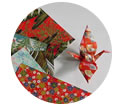
| | Origami paper folding is more than just an intricate art form in modern Japan. It is enjoyed by all to make toys or decorations, and just for the sake of doing it. Kyoto washi paper is the envy of the nation and what better than to take this opportunity to make your own souvenirs in one of these workshops.
|
| Kiyomizu ware and Kyoto ceramics
| | The fine restaurants and practitioners of tea ceremony demanded the finest most sophisticated ceramics to best show off their art. Hence Japan's leading ceramics artisans developed their skills in Kyoto. Many of the workshops in the Kiyomizu area nearby the temple of the same name will teach you some of their secrets and send your finished work of art to your anywhere in the world.
|
| Calligraphy
| 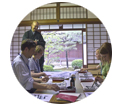
| | If you are inspired to write about your discoveries in Kyoto, why not practise traditional sweeping strokes with a brush and charcoal ink? You can learn how to write your name in Japanese characters and perhaps choose a kanji that sums up your experience in Kyoto.
|
|
Further information & places to take part in workshops
WAK Japan
WAK Japan has great expertise in introducing Japanese culture in other languages through home visits and special locations that are closed to casual visitors
http://www.wakjapan.com/
Tondaya
A Kyoto machiya timber merchant house with more than a century of history has been opened by the current 13th generation owner for access to trying on some kimono that they deal in as well as other culture workshops
http://www.tondaya.co.jp/english/indexE.htm
Handicraft Center
See craftsmen at work and even join a workshop if you feel inspired. You can end your visit here by shopping for pretty much any local handicraft
http://www.kyotohandicraftcenter.com
Nishijin Textile Center
Learn about the history of Kyoto silk weaving, try your hand with a loom and get some Kyoto souvenirs
http://www.nishijin.or.jp/eng/eng.htm
Taizoin Temple
This temple introduces Zen and temple life (including meditation) in English
http://www.taizoin.com/en/index.php
Kyoto.Travel
Kyoto Tourism & Culture Information System
http://www.kyoto.travel
| | ▲ Back to top
|
Traditional performing arts
|
| Geiko & Maiko dance
| 
| | Few people are lucky enough to catch a fleeting glimpse as the geisha flit between appointments in the Gion and other quarters of the city. Kyoto is the home of geisha arts, and only Kyoto geisha are referred to by the special terms Maiko - an apprentice - and Geiko - a fully qualified artist. You can see maiko and geiko perform at Gion Corner.
|
| Noh Theatre
| 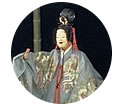
| | Noh is a classical performance that combines dance, drama, music and poetry. The present aesthetic form dates back to the 14th and 15th centuries. Stunning costumes and incredible masks are used to convey the characters. Kyoto is the home of this theatre that is recognised by UNESCO as a Masterpiece of the Oral and Intangible Heritage of Humanity. Noh can be seen throughout the year at the Kongo Noh Theatre and outdoor performances are given at some temples depending upon season.
|
| Kyogen
| 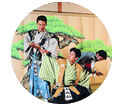
| | Kyogen is a light comical interlude in a Noh play that is now performed alone as well. Kyogen is highly accessible due to its pantomime qualities that overcome language barriers and bridge cultures. You can see Kyogen at Gion Corner and if you are lucky enough to be in Kyoto during a public performance at one of the temples.
|
| Gagaku
| 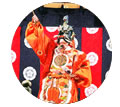
| | Gagaku is music from the Imperial Court that sat in Kyoto for more than a thousand years. It is a serene combination of music, dance and chorus. Performers impress with their Court costume that dates back to the eighth century. You can see Gagaku at Gion Corner.
|
| Kabuki
| | Kabuki is one of the best known Kyoto performing arts internationally. Kabuki plays are long and impress their audience by telling the story through stylised movements and striking costume and make up. The seasons are short but look out for schedules in listings like the Kyoto Visitor's Guide (free in hotels).
|
|
Further information & places to watch
Gion Corner
An informative introduction to several Japanese performing arts that began in Kyoto and Kansai explained in multiple languages in a single hour-long show.
http://www.kyoto-gion-corner.info
Kyoto Visitor's Guide
Monthly magazine that lists seasonal highlights, restaurants, shopping, and more in great detail giving visitors the knowledge of a local
http://www.kyotoguide.com/
Kyoto City Tourism and Culture Information System
Detailed guide to Kyoto history, sightseeing, culture, traditional industries and everything of interest to Kyoto visitors
http://kaiwai.city.kyoto.jp/raku/modules/english/index.php
Kyoto Official Travel Guide
Up to date and practical information for travellers to plan a complete experience of Kyoto
http://www.kyoto.travel/
| | ▲ Back to top
|
Tourist Information Offices
Kyoto City Tourist Information Office
| Details: | Information, pamphlets, questions answered on Kyoto city |
| Location: | Level 2 of JR Kyoto Station near Central Exit and Isetan department store |
| Open: | 8:30 - 19:00 365 days a year |
| Telephone: | 075 343 6655 |
Kyoto Tourist Information
| Details: | Information and questions answered on Kyoto city, prefecture and all Japan |
| Location: | Level 9 of JR Kyoto Station in Kyoto Prefecture International Center, access via Isetan department store |
| Open: | 10:00 - 18:00, closed 2nd & 4th Tuesday and New Year period |
| Telephone: | 075 344 3300 |
Tourist Information
| Details: | Information and questions answered on Kyoto city and surrounding area by volunteers of Kyoto Systematised Goodwill Guides (SGG) |
| Location: | Ground level near Shinkansen Central Entrance on Hachijoguchi (south) side of JR Kyoto Station |
| Open: | 10:00 - 16:00 |
Kyoto City Tourist Association Visitor Information Center
| Details: | Information on culture facilities, festivals, sightseeing tours in Kyoto as well as searchable electronic database |
| Location: | In front of Heian Jingu Shrine, Higashiyama, Kyoto |
| Open: | 9:00 - 17:00, closed New Year period |
| Telephone: | 075 752 0227 |
Kyoto Handicraft Center
| Details: | Pamphlets and questions answered and great souvenir shopping |
| Location: | Ground level of Kyoto Handicraft Center, Marutamachi Road, north of Okazaki Park |
| Open: | 10:00 - 18:00, closed New Year period |
| Telephone: | 075 761 5080 |
| | ▲ Back to top
|
Seasonal highlights
Kyoto celebrates the changing of the seasons in time honoured habits, events and festivals that form a central part of its daily life. Look out for special events in local listings such as Kyoto Visitor's Guide (free at hotels) when you get here.
Kyoto Visitor's Guide
Monthly magazine that lists seasonal highlights, restaurants, shopping, and more in great detail giving visitors the knowledge of a local
http://www.kyotoguide.com/
Kyoto Official Visitor's Guide
Up to date and practical information for travellers to plan a complete experience of Kyoto
http://www.kyoto.travel/
| | ▲ Back to top
|
Further information:
Useful Links
Complete list of links to Kyoto
Kyoto City Tourism and Culture Information System
Detailed guide to Kyoto history, sightseeing, culture, traditional industries and everything of interest to Kyoto visitors
http://kaiwai.city.kyoto.jp/raku/modules/english/index.php
Kyoto Visitor's Guide
Monthly magazine that lists seasonal highlights, restaurants, shopping, and more in great detail giving visitors the knowledge of a local
http://www.kyotoguide.com/
Welcome to Kyoto
Travel guide to Kyoto prefecture
http://www.pref.kyoto.jp/visitkyoto/en/
Kyoto Official Travel Guide
Up to date and practical information for travellers to plan a complete experience of Kyoto
http://www.kyoto.travel/
Kansai Window
Up to date and practical information for travellers to plan a complete experience of Kyoto
http://www.kansai.gr.jp/index.asp
JTB Sunrise Tours
City tours, culture tours, excursions with expert English-speaking guides
http://www.jtb.co.jp/shop/itdw/info/
WAK Japan
Home visits, culture workshops, tailor-made on-site programmes
http://www.wakjapan.com/
Tondaya
Culture workshops in a traditional Kyoto town house
http://www.tondaya.co.jp/english/indexE.htm
Kyoto Handicraft Center
Hands-on craft workshops and souvenir shopping
http://www.kyotohandicraftcenter.com
Nishijin Textile Center
An introduction to the history of Nishijin weaving, workshops and souvenirs
http://www.nishijin.or.jp/eng/eng.htm
Japan National Tourist Organization
Detailed coverage of all of Japan
http://www.jnto.go.jp/
| | ▲ Back to top
|
|
|
|


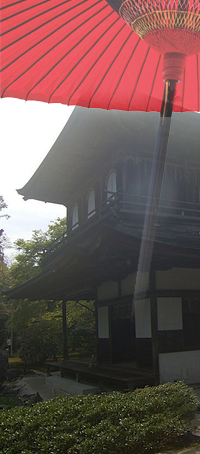
 Print this page
Print this page


